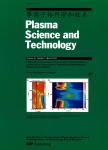Graft Polymerization of Acrylic Acid on a Polytetrafluoroethylene Panel by an Inductively Coupled Plasma
Graft Polymerization of Acrylic Acid on a Polytetrafluoroethylene Panel by an Inductively Coupled Plasma作者机构:Institute of Plasma PhysicsChinese Academy of Sciences Hubei Chemistry Research Institute Faculty of EngineeringShizuoka University
出 版 物:《Plasma Science and Technology》 (等离子体科学和技术(英文版))
年 卷 期:2011年第13卷第1期
页 面:88-92页
核心收录:
学科分类:07[理学] 070204[理学-等离子体物理] 0702[理学-物理学]
基 金:supported by National Natural Science Foundation of China (No. 10975162) Knowledge Innovation Project of Young Talent, Hefei Institutes of Physical Science, CAS (Nos. 075FCQ0126, Y05FCQ0127)
主 题:plasma treating PTFE panel PAA membrane acrylic acid
摘 要:Surface modification on a polytetrafluoroethylene (PTFE) panel was performed with sequential nitrogen plasma treatments and surface-initiated polymerization. By introducing COO- groups to the surface of the PTFE panel through grafting polymerization of acrylic acid (AA), a transparent poly (acrylic acid) (PAA) membrane was achieved from acrylic acid solution. Grafting polymerization initiating from the active group5 was achieved on the PTFE panel surface after the nitrogen plasma treatment. Utilizing the acrylic acid as monomers, with COO- groups as cross link sites to form reticulation structure, a transparent poly (acrylic acid) membrane with arborescent macromolecular structure was formed on the PTFE panel surface. Analysis meth- ods, such as fourier transform infrared spectroscopy (FTIR), microscopy and X-ray photoelectron spectroscopy (XPS), were utilized to characterize the structures of the macromolecule membrane on the PTFE panel surface. A contact angle measurement was performed to characterize the modified PTFE panels. The surface hydrophilicities of modified PTFE panels were significantly enhanced after the plasma treatment. It was shown that the grafting rate is related to the treating time and the power of plasma.



